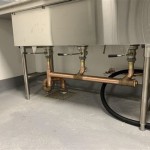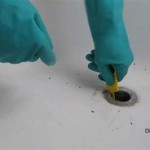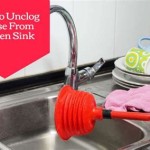Increase Water Pressure Kitchen Sink
Water pressure in the kitchen sink is a crucial factor in ensuring smooth and efficient daily tasks like dishwashing, cleaning, and food preparation. However, low water pressure can be a frustrating issue that hinders these activities. To address this problem, there are several effective methods to increase water pressure in the kitchen sink.
One common cause of low water pressure in the kitchen sink is mineral deposits or debris accumulation in the aerator. The aerator is a small attachment at the end of the faucet that helps regulate water flow and aerates the water. Over time, mineral deposits from hard water or other particles can clog the aerator and restrict water flow. To resolve this, simply remove the aerator and clean it thoroughly with vinegar or a commercial cleaner. After cleaning, reattach the aerator and check if the water pressure has improved.
Another potential cause of low water pressure is a faulty or clogged valve. The water supply to the kitchen sink is controlled by a valve underneath the sink. If the valve is partially closed or obstructed, it can restrict water flow. To troubleshoot this issue, locate the valve and check if it is fully open. If it is not, carefully adjust the valve handle to open it completely. If the valve appears to be faulty or damaged, it may need to be replaced by a qualified plumber.
If the aerator and valve are functioning correctly, the issue may lie with the water supply line itself. The water supply line, typically made of copper or plastic, can develop leaks or blockages over time. To inspect the water supply line, follow its path from the kitchen sink to the main water supply. Look for any visible leaks or kinks in the line. If a leak is detected, it must be repaired or replaced immediately to prevent further water damage. If the line is kinked, carefully straighten it out to restore proper water flow.
In some cases, low water pressure in the kitchen sink can be attributed to inadequate water pressure in the entire house. This issue may require professional attention from a licensed plumber. The plumber can inspect the main water supply line, pressure regulator, and other components of the plumbing system to identify and resolve any underlying issues that are affecting water pressure.
When attempting to increase water pressure in the kitchen sink, it is essential to proceed cautiously and avoid excessive force. Overtightening or tampering with plumbing components can lead to leaks or damage. If any doubts arise, it is always advisable to consult a qualified plumber for proper diagnosis and repairs.
By following these methods and addressing any underlying causes, it is possible to effectively increase water pressure in the kitchen sink and restore optimal functionality for daily tasks and water usage.

4 Ways To Adjust Faucet Water Pressure Wikihow

4 Ways To Adjust Faucet Water Pressure Wikihow

4 Ways To Adjust Faucet Water Pressure Wikihow

4 Ways To Adjust Faucet Water Pressure Wikihow

4 Ways To Adjust Faucet Water Pressure Wikihow

How To Increase Water Pressure In Kitchen Sink George Bathroom

4 Ways To Adjust Faucet Water Pressure Wikihow

How To Fix A Kitchen Faucet With Low Pressure And Flow Change Shutoff Valves Remove Debris

How To Increase Water Pressure In Kitchen Sink George Bathroom

How To Fix A Sink With Low Water Pressure Kitchen Or Bathroom Faucet Hot And Cold







